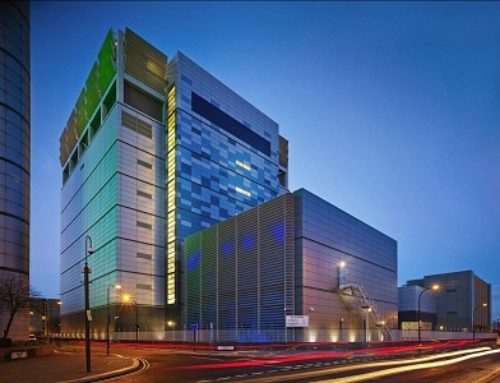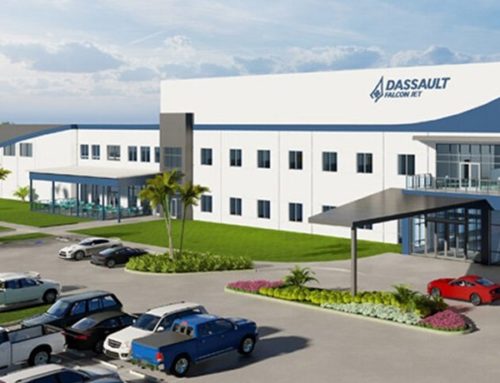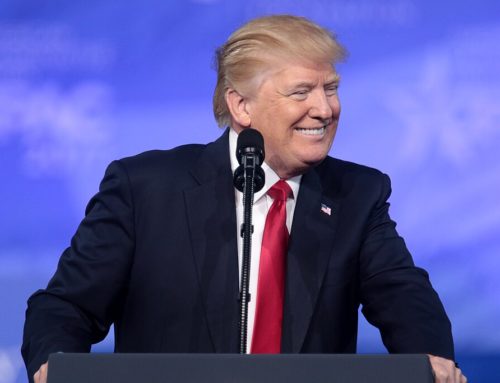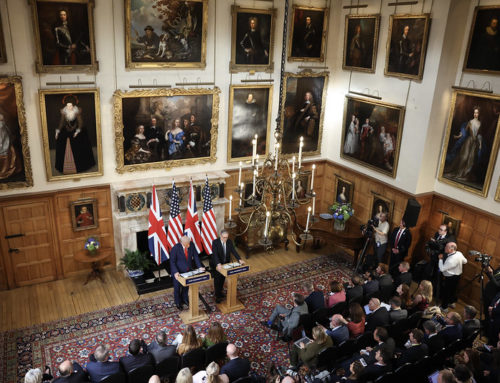1. Indiana Governor on Europe trade mission
In a world increasingly driven by technology and innovation, the importance of manufacturing and energy sectors cannot be overstated. Recognising this, Governor Holcomb has embarked on a significant journey to Europe. This trip is not merely a visit, but a strategic move aimed at fostering discussions around these critical sectors. The focus of these discussions will be on exploring opportunities for collaboration, understanding best practices, and paving the way for future advancements. This article delves into the details of this trip, the discussions that ensued, and the potential implications for the manufacturing and energy sectors.
Governor Holcomb is visiting the following countries in Europe:
– The Netherlands
– Belgium
– France
These visits are part of his economic development trip to build on discussions and deepen relationships within the microelectronic and semiconductor industries. This is his third international economic development trip this year, his second visit to France and Belgium, and his first visit to the Netherlands.
Objectives
Governor Holcomb’s trip to Europe has several key objectives:
1. Deepen Relationships:
The trip is designed to build on discussions and deepen relationships within the microelectronic and semiconductor industries.
2. Economic Development:
This is Governor Holcomb’s third international economic development trip this year. The focus is on strengthening connections with microelectronic, semiconductor, and energy companies.
3. Collaboration with Institutions:
The trip includes meetings with various institutions and government leaders, including the U.S. Ambassador to the Kingdom of the Netherlands, the Dutch Ministry of Economic Affairs and Climate Policy, and the Dutch Ministry of Foreign Affairs. In Belgium, meetings are scheduled with Imec, a research and innovation hub in nanoelectronics and digital technologies.
4. Strengthen Cooperation:
A memorandum of understanding was signed between Indiana and Flanders in 2023 to further strengthen cooperation on semiconductors, life sciences, and energy.
5. Promote Research and Development:
The delegation will also visit Imec’s new research and development hub at Purdue University’s West Lafayette campus.
By achieving these objectives, Governor Holcomb aims to bring new opportunities and advancements to Indiana’s manufacturing and energy sectors. His trip underscores the importance of international collaboration in driving economic growth and technological innovation.
Discussion topics
The specific topics being discussed in Governor Holcomb’s meetings during his Europe trip are:
1. Microelectronics and Semiconductors:
The main focus of the discussions is to deepen relationships within the microelectronic and semiconductor industries. This includes meetings with companies like Redwire, a space satellite design and development company.
2. Research and Innovation:
The delegation will meet with imec, a research and innovation hub in nanoelectronics and digital technologies. In 2023, imec committed to work with Indiana officials and Purdue University to advance research and development in the state’s semiconductor sector.
3. Government and Institutional Meetings:
In the Netherlands, the delegation will meet with the U.S. ambassador to the Netherlands, as well as the Dutch Ministry of Economic Affairs and Climate Policy, and the Dutch Ministry of Foreign Affairs. In Belgium, meetings are scheduled with representatives of the European Union External Action Service, and the Minister-President of Flanders, Jan Jambon.
4. Cooperation on Semiconductors, Life Sciences, and Energy:
The governor’s office pointed to a 2023 memorandum of understanding between Indiana and Flanders “to further strengthen cooperation on semiconductors, life sciences and energy”.
These discussions aim to foster international collaboration, promote economic development, and drive technological innovation in Indiana’s manufacturing and energy sectors.
2. Chinese businesses visit Busan

Thomas Roger Lux via Unsplash
In the dynamic world of global commerce, the landscape of Sino-Korean trade is evolving at an unprecedented pace. This article delves into the recent surge of Chinese businesses flocking to Busan, a bustling South Korean port city, in search of new trade opportunities. As the tides of economic cooperation between China and South Korea continue to ebb and flow, Busan emerges as a beacon of potential and prosperity. This shift not only signifies a new chapter in Sino-Korean relations but also underscores the strategic importance of Busan in the broader context of East Asian commerce. Join us as we explore this fascinating development and its implications for the future of international trade.
Challenges
Chinese businesses face several challenges when exploring new trade opportunities in Busan. Here are some of the key challenges:
1. Geopolitical Tensions and Trade Landscapes:
The fluctuating Sino-Korean trade relations pose a significant challenge. The geopolitical tensions and ever-changing trade landscapes can impact the procurement opportunities with local suppliers.
2. Competition with Local Products:
Korean products are losing some competitiveness to increasingly cost-effective and high-quality Chinese goods. However, their distinctive qualities still appeal to Chinese customers.
3. Pandemic Impact:
The COVID-19 pandemic has reshuffled the export-import landscape between the two countries. Many supply chains and sales channels have been disrupted, making it difficult for businesses to resume their operations.
4. Tariffs and Transport Costs:
The prices of Korean products are much higher due to tariffs and transport costs. This makes it challenging for Chinese businesses to import Korean products, especially when China has cheaper alternatives of similar quality.
5. Port Challenges:
Busan, one of the biggest port cities in South Korea, is facing new challenges due to alliances formed by major shipping companies that are clients of its ports.
These challenges highlight the complexity of international trade and the need for businesses to stay adaptable and resilient in the face of changing circumstances. Despite these challenges, the potential for growth and new opportunities in Busan remains significant.
Role of the government
Government policies play a crucial role in shaping the landscape of international trade. Here are some ways they can facilitate or hinder trade:
1. Trade Liberalisation:
Government policies aim to promote free trade, remove barriers to international trade, and facilitate the flow of goods, services, and investments across borders. Trade agreements, such as the World Trade Organisation (WTO) agreements and regional trade pacts, reduce tariffs, quotas, and other trade barriers, enhancing market access, fostering competition, and stimulating economic growth.
2. Protectionism and Trade Barriers:
Protectionist policies, including tariffs, quotas, and import restrictions, aim to shield domestic industries from foreign competition, protect domestic jobs, and safeguard national interests. However, these measures can distort market dynamics, raise consumer prices, and hinder global trade, leading to trade tensions, retaliatory measures, and economic inefficiencies.
3. Multilateralism vs. Bilateralism:
The shift from multilateral trade negotiations to bilateral and regional trade agreements reflects changing geopolitical dynamics and divergent trade priorities among countries. While multilateral trade agreements promote consensus-building, inclusivity, and harmonisation of trade rules, bilateral agreements allow countries to negotiate terms tailored to their specific interests.
4. Economic Growth and Development:
Global trade policies shape economic growth and development by facilitating trade flows, stimulating investment, and creating employment opportunities across industries and regions. Trade liberalisation fosters specialisation, economies of scale, and efficiency gains, driving productivity growth, innovation, and competitiveness in global markets.
5. Trade Imbalances and Disparities:
Global trade policies can exacerbate trade imbalances and disparities, leading to unequal distribution of benefits and costs among trading partners.
6. COVID-19 Government Policies and Trade Measures:
The COVID-19 pandemic has reshuffled the export-import landscape between countries. Government policies and trade measures either caused trade disruptions that lowered trade resilience and hindered sustainable trade, or supported trade flows, leading to trade competitiveness.
In conclusion, government policies can both facilitate and hinder trade, depending on their nature and implementation. They are a set of rules, regulations, and measures that governments implement to regulate the economy and control trade activities within their borders. However, they also have the potential to burden businesses with compliance expenses and hinder innovation and competition.
3. Trade promotion event is scheduled to be held in Hanoi
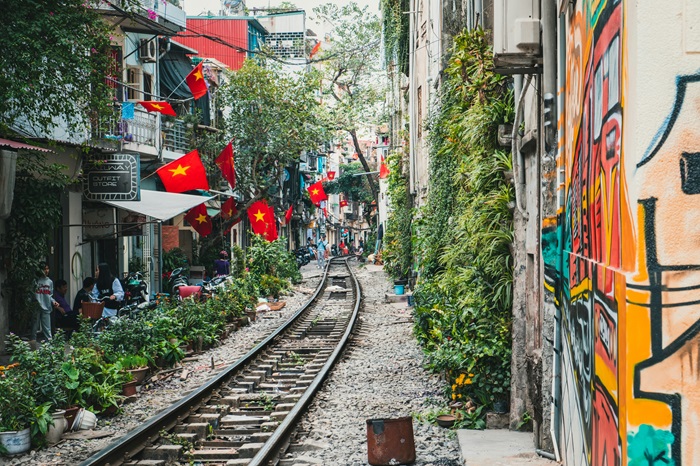
Silver Ringvee via Unsplash
In the vibrant and bustling city of Hanoi, a significant event is on the horizon that promises to invigorate the local economy and foster international relationships. A Trade Promotion Event, a grand spectacle of commerce and industry, is scheduled to take place, bringing together businesses from across the globe. This event serves as a testament to Hanoi’s growing influence in the global market and its commitment to fostering an environment of economic growth and prosperity. Stay tuned as we delve into the details of this exciting event, exploring its potential impacts, the participants, and what it means for the future of trade in Hanoi.
The Trade Promotion Event in Hanoi is a significant event that brings together businesses from across the globe. Here are some more details about the event:
1. Event Name:
The event is known as the Vietnam International Trade Fair or VIETNAM EXPO.
2. Organisers:
The event is hosted by the Ministry of Industry and Trade of Vietnam, directed by the Vietnam Trade Promotion Agency (VIETRADE), and organised by VINEXAD JSC.
3. Date and Venue:
The 34th Vietnam International Trade Fair – VIETNAM EXPO 2025 will officially kick off at 9 AM on April 2nd at the Hanoi International Exhibition Center (I.C.E – 91 Tran Hung Dao Street, Hoan Kiem District, Hanoi).
4. Participants:
The event is expected to welcome more than 20,000 visitors.
5. Event Theme:
The theme of the event is “Cooperation for Sustainable Development”.
6. Activities:
The event includes organising international trade fairs and exhibitions in Vietnam, including first-time exhibitions such as a One Commune One Product (OCOP) exhibition and an international industrial supply chain products fair.
7. Promotion Activities:
Efforts will also be made to expand the reach of Vietnam’s marketing activities to international audiences, including setting up national pavilions at prestigious international fairs, sending trade promotion delegations abroad, and facilitating business forums to promote bilateral and multilateral cooperation programs at various levels.
Industries
The Trade Promotion Event in Hanoi, also known as the Vietnam International Trade Fair or VIETNAM EXPO, will feature a diverse range of industries. Here are the main categories that will be represented at the event:
1. Vietnam Export and Investment Promotion Pavilions:
These pavilions will showcase the products and services of Vietnamese companies looking to expand their export markets and attract foreign investment.
2. National Pavilions:
These pavilions will represent various countries, providing a platform for foreign companies to showcase their products and services and explore opportunities in the Vietnamese market.
3. Electronics, Machinery, and Supporting Industries:
This category will feature companies from the electronics and machinery sectors, as well as those providing supporting services to these industries.
4. Digital Technology and E-commerce:
Companies in the digital technology and e-commerce sectors will have the opportunity to showcase their latest innovations and solutions.
5. Food and Beverage:
Companies in the food and beverage industry will be able to showcase their products, ranging from traditional Vietnamese cuisine to international food and drink products.
4. UK Govt Urges Businesses to Export

In an era of increasing globalisation and economic interdependence, the UK government has taken a significant step towards fostering a more conducive environment for businesses. The government is actively encouraging businesses to leverage the benefits of reduced tariff rates under the UK’s Free Trade Agreements. This move, aimed at bolstering the nation’s economic growth, presents a golden opportunity for businesses to expand their horizons and tap into international markets with greater ease. This article delves into the implications of this initiative, exploring how businesses can navigate this new landscape and reap the benefits of reduced tariff rates.
UK Free Trade Tariffs
The UK’s Free Trade Agreements (FTAs) are designed to facilitate trade by reducing or eliminating tariffs and non-tariff barriers. Here are some key points about the UK’s FTAs and their tariff rates:
1. UK Global Tariff (UKGT):
The UK’s Integrated Tariff Schedule is based on the UK’s Most Favoured Nation (MFN) tariff schedule called the UKGT. The UKGT tariff rates apply to all trading partners which the UK has no alternative agreements with. The UKGT almost doubles the number of tariff lines that have zero import tariffs, with just under half of all UK MFN tariff lines now set at 0%.
2. Free Trade Agreements:
Within a Free Trade Agreement, negotiating partners can offer countries more preferential access to their markets by reducing or liberalising tariffs. Therefore, if you have a Free Trade Agreement with a country, these tariffs will apply in the place of Most Favoured Nation Tariffs.
3. UK-EU Trade and Cooperation Agreement:
This agreement provides for zero tariffs and zero quotas on all goods that comply with the appropriate rules of origin.
4. Other Agreements:
As an independent trading nation, the UK now has over 70 trade agreements in place. Recent trade agreements that have come into force include the UK-Australia Free Trade Agreement, UK-New Zealand Free Trade Agreement, Singapore Digital Economy Agreement, Japan Comprehensive Economic Partnership Agreement, and Norway, Iceland and Liechtenstein Free Trade Agreement.
Please note that the specific tariff rates can vary depending on the product and the country. For the most accurate and up-to-date information, you should refer to the official UK government resources.
5. Thailand To Host ASEAN-Canada FTA Talks
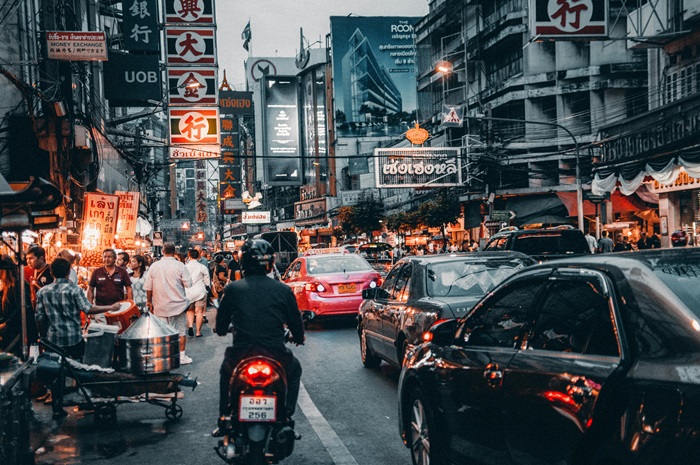
Suzukii Xingfu via Pexels
In the bustling heart of Southeast Asia, the city of Bangkok, Thailand is set to play a pivotal role in shaping the economic future of the region. As the host city for the upcoming ASEAN-Canada Free Trade Agreement negotiations, Bangkok is poised to become the epicentre of crucial discussions that could redefine trade relations between the ASEAN countries and Canada. This article delves into the intricacies of these negotiations, exploring the potential impacts and opportunities that could emerge from this significant event. As we navigate through the complexities of international trade, we’ll shed light on how this agreement could potentially transform the economic landscape of the participating nations and beyond. Stay tuned as we unravel the story behind these negotiations, right from the heart of Bangkok.
FTA
The ASEAN-Canada Free Trade Agreement (FTA) is a significant step towards strengthening economic ties between Canada and the Association of Southeast Asian Nations (ASEAN), a regional intergovernmental organisation comprising 10 member states.
The negotiations for this agreement began on November 16, 2021. As a group, ASEAN member states’ economies represent Canada’s fourth-largest merchandise trading partner as of 2021. In the same year, merchandise trade between Canada and ASEAN reached CAD$40.7 billion.
According to a joint feasibility study conducted in 2018, it was projected that the FTA could increase Canada’s GDP by US$2.54 billion and boost exports to ASEAN countries to US$2.67 billion. This agreement aims to create new market opportunities for Canadian goods and services, while supporting a more transparent and predictable environment for trade and investment.
As of now, Canada and ASEAN have held six rounds of negotiations, with the most recent one in January 2024. The seventh round is scheduled to take place in late February 2024, in Kuala Lumpur, Malaysia. The goal is to substantially conclude the negotiations by 2025.
This agreement represents a significant milestone in the ASEAN-Canada relationship and a meaningful step in Canada’s renewed commitment to trade and economic engagement in the region. It is expected to strengthen ASEAN-Canada economic relations, connect ASEAN closer to the global value chains, and improve market access for both ASEAN and Canadian firms.
Sectors
The ASEAN-Canada Free Trade Agreement covers a broad range of sectors. Here are some of the key sectors identified:
1. Industry 4.0:
This includes the digital transformation of industries through advanced technologies such as artificial intelligence, robotics, and the Internet of Things.
2. Cybersecurity:
The agreement aims to enhance cooperation in protecting digital infrastructure and data from cyber threats.
3. Digital Trade:
The agreement seeks to promote digital trade, which includes e-commerce and other forms of trade conducted over the internet.
4. 5G and Emerging Technologies:
The agreement covers cooperation in the deployment and use of 5G technology and other emerging technologies.
5. Agriculture and Agri-food:
This sector includes farming and the production of food products.
6. Fish and Seafood:
This involves the trade of fish and other seafood products.
7. Natural Resources:
This includes the trade of natural resources such as minerals, oil, gas, and timber.
8. Manufacturing:
This sector involves the production of goods in factories.
9. Financial Services:
This includes banking, insurance, and investment services.
These sectors were identified as having significant opportunities for enhanced trade relations between Canada and the ASEAN countries. The agreement aims to connect ASEAN and Canadian companies, including Micro, Small, and Medium Enterprises (MSMEs), and support the ASEAN’s digital transformation agenda.
6. Corning expands in India
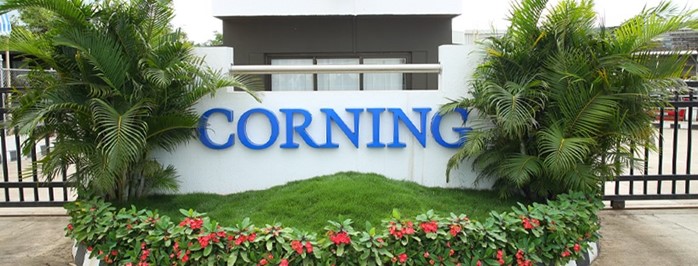
In a significant move that underscores its commitment to innovation and growth in India, Corning Incorporated, a global leader in materials science, has announced the expansion of its Indian operations with the establishment of a new Digital & IT Centre in Pune. This strategic development not only marks a new chapter in Corning’s enduring relationship with India but also signifies the company’s intent to tap into the vast pool of digital and IT talent in the region. The new centre is poised to play a pivotal role in driving Corning’s digital transformation journey, fostering innovation, and contributing to the company’s global operations.
Corning in India
Corning entered the Indian market in the late 1980s to produce cathode ray tube (CRT) glass for the TV industry. Today, Corning’s investments in India align well with emerging market trends in the region. Corning’s Optical Communications business has played a key role in India’s growing telecommunications market. In 2012, Corning established a state-of-art optical fibre manufacturing facility in Chakan, Pune with an investment of over $100 million.
Corning’s materials and process expertise has contributed to the campaign for clean air for more than 25 years in India. Corning has been supplying high-quality eyewear lenses to the Indian market for more than 25 years.
As of today, Corning’s business operations in India include: Corning India office in Gurgaon, Corning Optical Communications Plant in Chakan, Pune, Corning Research Centre India in Pune, and Wireless Software Centre of Excellence in Gurgaon.
Corning’s bioprocessing tools are already helping Indian biopharma companies develop and produce vaccines. Corning Inc. is investing Rs. 1,000 crore to set up a manufacturing facility in Tamil Nadu. The facility will be situated on a 25-acre plot at Pillaipakkam, close to Sriperumbudur, and is expected to employ around 300 people.


